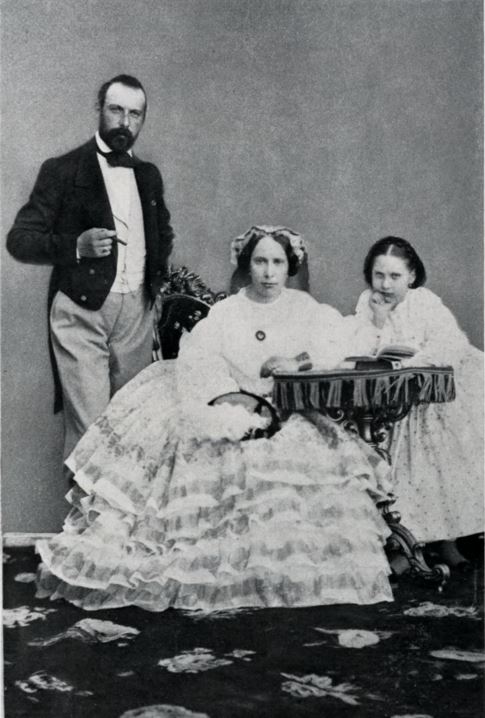by Scott Mehl © Unofficial Royalty 2015

Queen Lovisa of Sweden and Norway; Credit – Wikipedia
Queen Lovisa of Sweden was the wife of King Carl XV of Sweden (also King Karl IV of Norway). She was born Princess Wilhelmina Frederika Alexandrine Anna Louise of the Netherlands on August 5, 1828, in The Hague, the Netherlands. Her father, Prince Frederik of the Netherlands, was a son of King Willem I of the Netherlands, and her mother, Princess Luise of Prussia, was a daughter of King Friedrich Wilhelm III of Prussia. She had three younger siblings:
- Prince Frederik (1833 – 1834) – died at 16 months old
- Prince Willem (1836 – 1846) – died at 9 years old
- Princess Marie (1845 – 1910) – married Wilhelm, Prince of Wied, had issue
Princess Louise was educated by a governess, studying French, German, English, Russian, and piano. Following her confirmation in 1845, a hunt began to find a suitable husband for the young princess. In 1849, she met Prince Carl of Sweden, the son and heir of King Oscar I, and negotiations were soon underway to arrange a marriage between the two. While Louise was enamored of her future husband from their first meeting, he found her unattractive. However, King Oscar wanted to create familial ties between the relatively new Bernadotte dynasty and the other long-established European dynasties. With Louise’s Dutch and Prussian families and the promise of a large dowry, she was an ideal candidate. Prince Carl eventually conceded to his father’s wishes, and the couple’s engagement was announced in February 1850. Louise quickly learned to speak Swedish, although she never studied Norwegian.
Louise and Carl were married on June 19, 1850, at the Storkyrkan in Stockholm, Sweden, and the couple had two children:
- Princess Louise (1851-1926) – married King Frederik VIII of Denmark, had issue
- Prince Carl Oscar (1852-1854) – died in childhood

Lovisa with her husband and daughter, late 1850s. source: Wikipedia
The marriage was an unhappy one. Lovisa (as she was now known) was desperately in love with her husband, but he was consistently unfaithful to her. Having had complications in her second pregnancy, Louise was unable to bear any more children. Following their son’s death in 1854, leaving no male heir to inherit the throne, Lovisa offered her husband a divorce, which he declined.
Upon her father-in-law’s death on July 8, 1859, her husband ascended the thrones of Sweden and Norway, and Lovisa became Queen. She was crowned with her husband in Sweden on May 3, 1860, and in Norway on August 5, 1860. She was the first Queen in the union of Sweden and Norway to be crowned in both countries, as the previous two consorts had been Catholic and could not be crowned in Norway.
Unlike her predecessors, Lovisa took little interest in politics. Instead, she put her efforts into philanthropic work, founding and supporting numerous charities in both Sweden and Norway. She preferred these activities to those of the formal court functions she was required to attend as Queen and often feigned illness to avoid attending. However, she did suffer from ill health, often experiencing fainting spells, and at least once having what may have been an epileptic seizure. The cause of these maladies was typically attributed to her husband’s affairs.

Tombs of King Carl XV and Queen Lovisa. photo © Susan Flantzer
Lovisa traveled to the Netherlands to be at her mother’s deathbed in late 1870. Upon returning, her husband fell ill and she nursed him back to health. Physically drained, Lovisa contracted pneumonia and died on March 30, 1871, at the Royal Palace in Stockholm, Sweden. She was buried at the Riddarholm Church in Stockholm, Sweden. Despite their strained relationship, King Carl XV was reportedly distraught at Lovisa’s death and died a year and a half later.
Kingdom of Sweden Resources at Unofficial Royalty
- Kingdom of Sweden Index
- Swedish Orders and Honours
- Swedish Royal Dates
- Swedish Royal Burial Sites
- Swedish Royal Christenings
- Swedish Royal FAQs
- Swedish Royal Residences
- Swedish Royal Weddings
- Line of Succession to the Throne of Sweden
- Profiles of the Swedish Royal Family
This article is the intellectual property of Unofficial Royalty and is NOT TO BE COPIED, EDITED, OR POSTED IN ANY FORM ON ANOTHER WEBSITE under any circumstances. It is permissible to use a link that directs to Unofficial Royalty.
